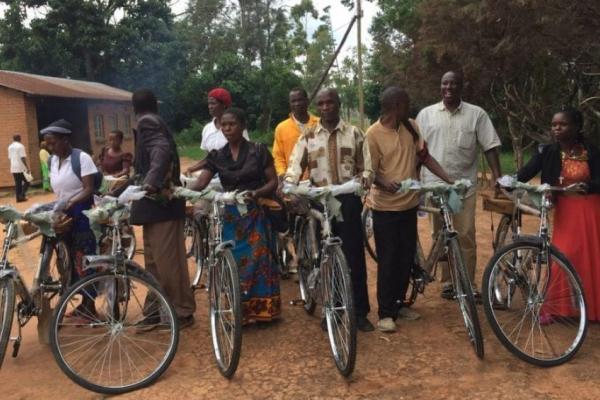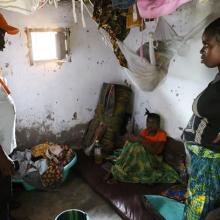When community health worker (CHW) programs have focused on supporting patients with pre-defined conditions, the impact for these patients can be life-changing. Community-based accompaniment provided by Partners In Health CHWs in Haiti and Peru more than a decade ago, for example, resulted in game-changing outcomes in HIV and TB care that were felt around the world.
As it turns out, that’s just the start of what CHWs can do.
At PIH sites in Malawi and Liberia, a transition is underway to a new model that recognizes CHWs’ value extends far beyond the needs of any specific patient group. More than just a link to other levels of the health system, CHWs can be agents of social connection. When CHWs are able to work with all households in a community instead of only with patients known to be sick, it can have dramatic implications.
“The household model allows the CHWs to provide care for the entire household with different health conditions, unlike the patient-centered approach which focuses on only the patient to whom the CHW is assigned,” — Lassana Jabateh, Director of Community Health Programs for PIH Liberia
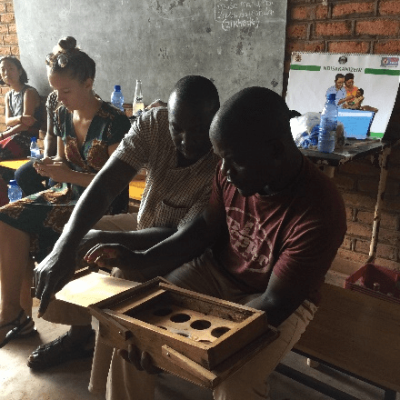
Lassana Jabateh (Liberia) and Benson Chabwera (Malawi) look over the sputum collection boxes being given to each CHW supervisor after that day’s training.
Dan Palazuelos / Partners In Health
The CHW household model can reduce stigma because having a CHW visit the home is no longer associated with having a disease. As CHWs provide a wide variety of services across maternal and child heath and communicable and non-communicable diseases, they also help respective governments achieve health-related targets in the Sustainable Development Goals. CHWs chosen by their community and trained by PIH can also help facilitate broader changes on a community level because everyone in a community can be involved and take part in the same discussions.
These are some of the observations that came out of a cross-site household-model CHW summit last month, supported by PIH Canada in partnership with The Samuel Family Foundation. A team of CHW leaders from Liberia visited colleagues in Malawi to learn from the Malawi experience implementing the household model over the past year. The visit was part of a larger project studying CHWs’ role in fostering social connectedness, reducing social isolation and promoting healthy communities. As with all good collaborations, the learning went both ways.
“PIH Liberia is one of PIH’s newest sites and PIH-Malawi is 11 years old, yet when watching the two teams come together for the first time, it was like watching a family reunion,” said Dr. Dan Palazuelos, Senior Health and Policy Advisor for Community Health Systems at Partners In Health. “They understood each other immediately and had a working relationship almost instantaneously. It was heartening to watch.”
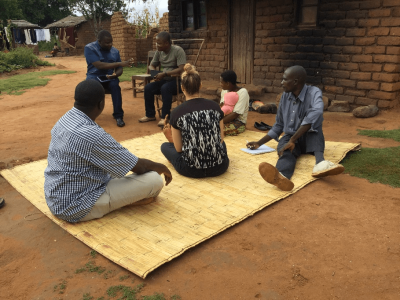
Zayzay Lavela, Julia Rogers, Lassana Jabateh (Liberia) join Sam Msiska, Victor Kanyema (Malawi) to visit Loveness Dona and her family during as assessment for social support (as part of the Program on Social and Economic Rights (POSER).
Dan Palazuelos / Partners In Health
Basimenye Nhlema, Director of Community Health for PIH in Malawi, appreciated a discussion around the potential role of household CHWs in building a supportive plan to encourage pregnant women to choose facility-based deliveries. Facility-based deliveries allow for a better clinical response and lower maternal mortality especially in case of complicated pregnancies, but women in remote and rural areas face very real challenges when making that choice. Even when there are maternal waiting homes near health facilities, women may not have all the support they need either at the waiting homes or for other children back at home while they would be gone. As a result, some women in the PIH Malawi catchment area are still choosing to deliver at home.
“The Liberian team suggested that we try using a more comprehensive approach to accompanying pregnant women that includes helping them to come up with practical ways of preparing for delivery and possibly post-natal processes,” Nhlema said. “Our CHWs can help pregnant women to plan together with their families on how they will support the pregnant woman throughout pregnancy, delivery period and afterwards, and the CHW can monitor on a monthly basis how that plan is being ‘actionalized’ in preparation for delivery. We are excited with this proposition and look forward to trying it.”
From the Malawi team, Jabateh learned the importance of using a checklist to guide CHW responsibilities and use of time. Formalizing regular connections with clinical staff to understand a health center’s capacity to take new patients and identify gaps in interactions between CHWs and facility-based colleagues is also critical to providing strong patient care. For patients who need to be taking regular medications, these linkages can be the difference between treatment failure and increasing drug resistance and successful retention in care.
“Being in an internal activity involving one PIH site with another, we were comfortable enough to open up completely about what we’ve seen to be working so far and what hasn’t worked as expected. We allowed ourselves to be vulnerable because we know we are unified by one agenda and one mission.” — Basimenye Nhlema, Director of Community Health for PIH in Malawi
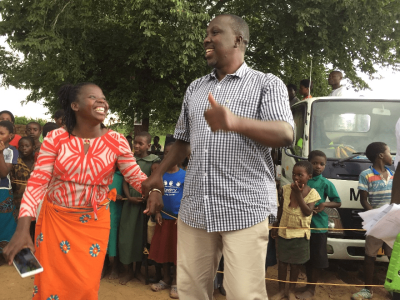
Basimenye Nhlema (PIH Malawi) and Lassana Jabateh (PIH Liberia) celebrate their new working relationship by dancing at an active case-finding campaign.
Dan Palazuelos / Partners In Health
